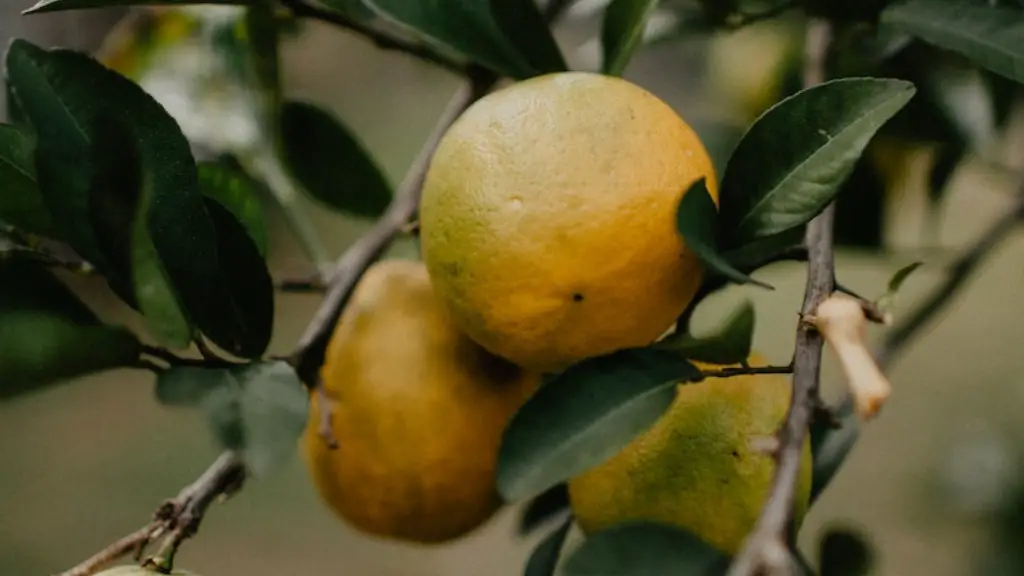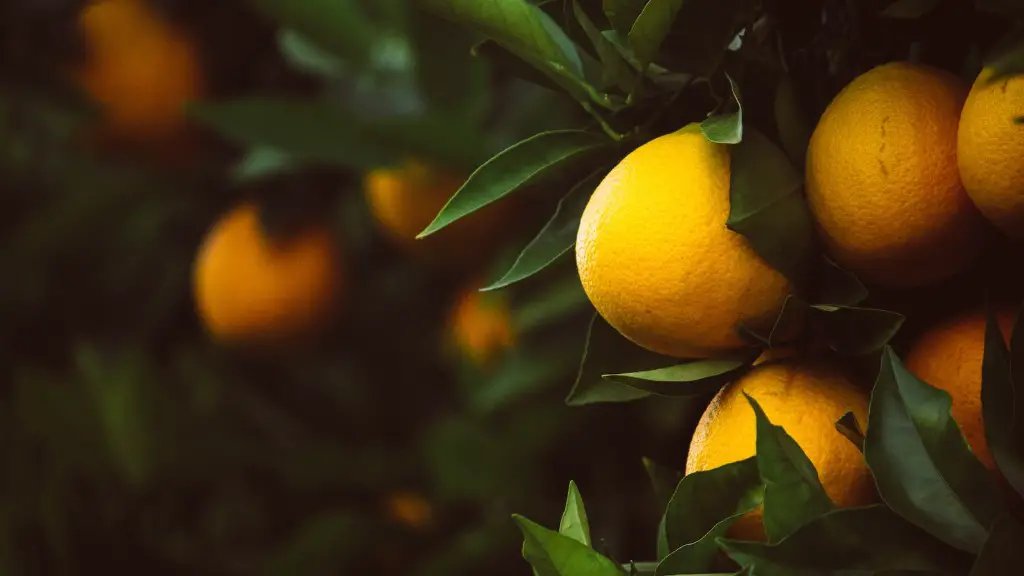Introduction: Growing lemon trees inside can be a rewarding experience. Just because it’s an indoor plant doesn’t mean you can’t get lemons from it – with a little bit of effort and knowledge, you can enjoy the sweet citrus fruit all year round. This guide will show you how to achieve success with your lemon tree and the tools you need to get started.
Choosing the right tree: Firstly, when choosing a lemon tree, make sure you get one that’s appropriate for indoor growth. You should also look for one that’s relatively small in size and free of any disease or insect damage. If possible, pick a young sapling – they’ll adapt better to indoor conditions and won’t grow too large.
Providing optimal sunlight: To support healthy growth, lemon trees will require a good source of bright, indirect sunlight. Place it near a sunny window and make sure the temperature doesn’t dip below 55F. If it does, try investing in a floor lamp or a special LED light to supplement the available light.
Maintaining water levels: It’s important to keep an eye on the lemon tree’s water levels. It will need to be moist, but not overly damp or dry. If you find yourself watering frequently,try adding a drainage tray to the bottom of the pot and adjust the soil accordingly.
Fertilizing the tree: To ensure adequate nutrition, fertilize the lemon tree every 6-8 weeks. Organic fertilizers are generally recommended due to their slow-release nature. Avoid fertilizers that contain large amounts of nitrogen – not only can they damage the plant, but they can also affect its fruit production.
Protection from pests: Lemon trees are susceptible to pests, such as mealybugs and spider mites. Inspect them regularly for any signs of infestation. If you do spot anything, don’t hesitate to use natural insecticides to guard against any threats.
Harvesting the fruit: Depending on the type of lemon tree, you may experience fruit production after three to five years. The first crop won’t be large, but it will gradually increase as the tree matures. Make sure to pick the fruit at the right time – it should feel heavy and slightly soft on the outside.
Re-potting and Pruning the Tree
Re-potting: Lemon trees tend to outgrow their pots quickly, so re-potting is essential. Choose a pot that’s slightly larger in size and fill it with a nutrient-rich potting mix. Re-potting is best done in early spring as this is when the tree is in its most active growth period.
Pruning: Pruning keeps your lemon tree healthy and promotes fruit production. Start by cutting off any woody and dead branches, then trim back any branches that are growing in an awkward shape. Do this when essential and only prune away a maximum of a third of the tree.
Caring for the Tree in Winter
Reducing watering: During the winter months, the lemon tree should receive around half as much water as it did during the summer. This should not be taken literally, however – monitor the soil to ensure it has enough moisture but isn’t saturated. Also, avoid exposing the tree to windy or cold conditions as this can cause damage to the leaves.
Light conditions: With winter comes shorter days, meaning less natural light. Try and provide some form of artificial light to compensate. You can either position your lamp near the tree or buy a top-tier LED light specifically designed to benefit indoor plants.
Temperature: Temperature is a major factor when it comes to winter growth. For optimal results, keep the room at a temperature between 55-60F. If the temperature is any lower than this, the tree will start to go dormant and its fruit production will be affected.
Fertilizing: Fertilizing during the winter is not essential, but it can give the tree an extra boost of nutrition. Use an organic fertilizer that’s high in potassium and lower in nitrogen and phosphorus for best results. Don’t forget to keep the compost at room temperature too.
Pests and Diseases
Insect damage: Although you can use natural insecticides to reduce the risk of infestation, it’s best to take preventative measures. Inspect the tree for any signs of damage and make sure the leaves are always kept hydrated. Clean the leaves regularly with a damp cloth to remove any egg masses and keep an eye out for any other signs of insect damage.
Diseases: Common diseases that affect lemon trees include citrus scab, powdery mildew and anthracnose. To treat them, opt for a natural fungicide made from garlic and water. This should be applied to the foliage and soil every few weeks.
Soil: Make sure to monitor the soil on a regular basis. You want to make sure it’s moist but not saturated and that it drains properly. If it’s waterlogged, add some coarse material such as sand or perlite to improve the drainage.
Temperature: Temperature plays a major role when it comes to avoiding pests and diseases. The ideal range is between 61-81F. If the temperature drops below this mark, the tree’s growth and production is likely to stop.
Concerns about Water Quality
Watering with tap water: Tap water contains chlorine and other chemicals which can harm your lemon tree. To avoid this, use rain water or collect snow and let it melt. Make sure to filter this water with a mesh strainer before using it on the tree.
High sodium levels: If the sodium levels in your water are too high, try water your lemon tree with distilled water – this will help to avoid any sodium buildup in the soil. You can also flush out the existing soil every few months to reduce its salt content.
Soil pH: In general, lemon trees like slightly acidic soil with a pH level between 6.0-6.5. If you’re having difficulty keeping the soil at this level, you can use an inexpensive soil tester to monitor it. Try and keep the soil balanced, as a pH level that’s too high or too low can lead to nutrient deficiencies.
Watering frequency: Even if your water is of good quality, it’s important to not overwater your lemon tree. Monitor the soil and only water when it starts to look dry. For more information, check out our guide on determining whether a plant is thirsty or not.



